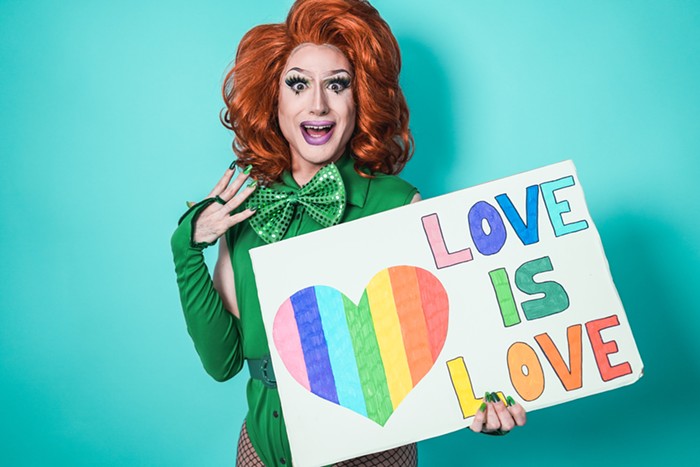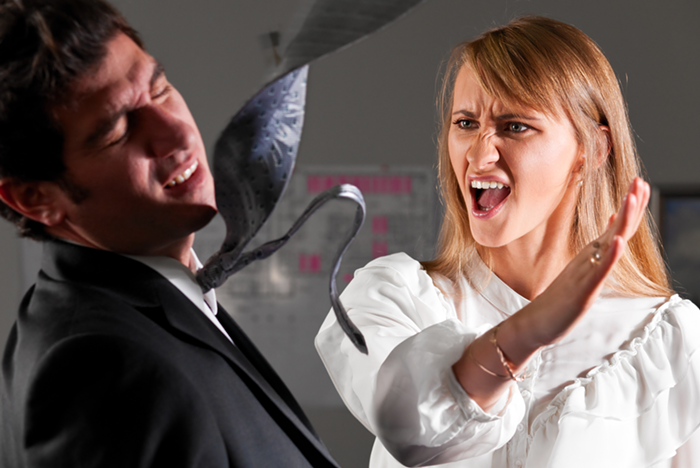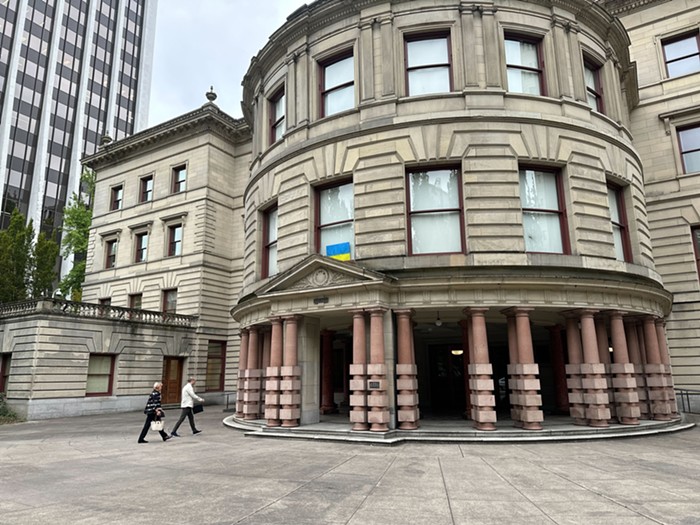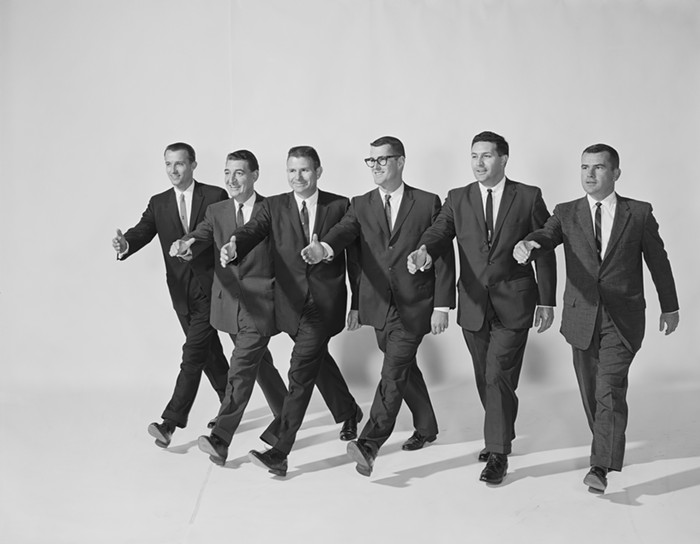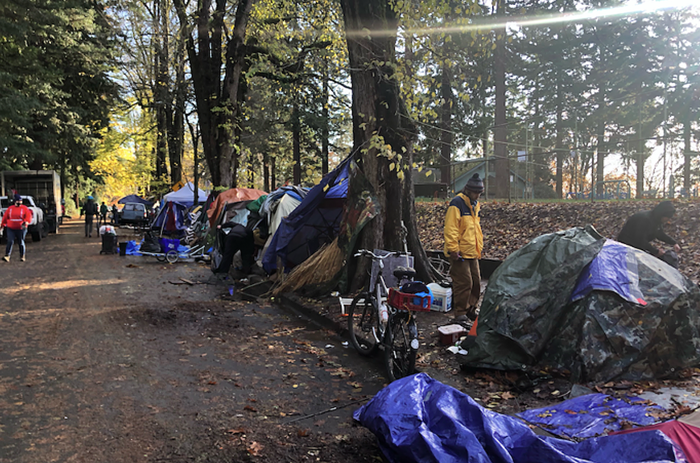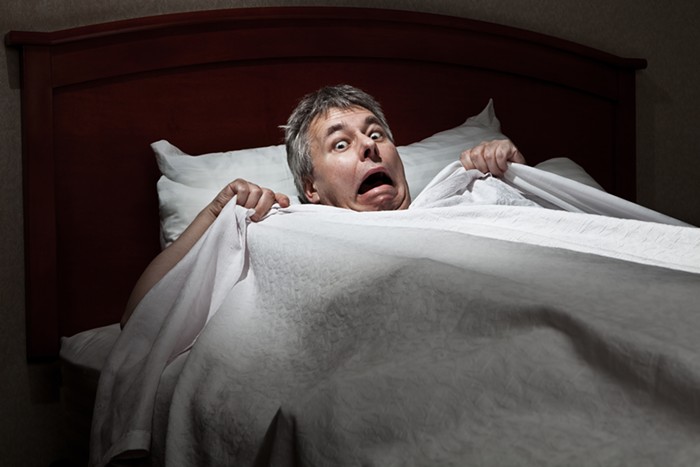PORTLAND'S STAND-UP SCENE is blowing up.
In the last five years, we've seen Salem comic Ron Funches star on an NBC sitcom and Beaverton juggernaut Ian Karmel go from
Chelsea Lately to The Late Late Show with James Corden as a writer. The Bridgetown Comedy Festival has grown in the last five years as well, inspiring thousands of national comics to apply for a coveted spot. So what's missing from this nationally recognized boom? Diversity.
"There aren't a lot of gay male figures [in comedy]... but there are a lot of lesbians. It's a thing," says Portland comic and producer Whitney Streed. Local drag artist Carla Rossi echoes her point, "It's kind of the niche you're given—if you're funny and gay, you're either a drag queen or Bruce Vilanch."
If you're a lesbian in Portland comedy, you have a number of local performance showcases. Lez Stand Up, Comedy at Crush, It's Gonna Be Okay, and Am I Right, Ladies? are female-driven comedy shows that are also self-described "safe spaces," where the producers don't cotton to triggering and/or abusive language.
Comic, drag performer, and producer Melody Awesomazing started stand-up in one of these safe spaces. "I went straight into the [lesbian] stand-up community," Awesomazing says, "though I'm still apprehensive of the greater scene at large. I don't know how I fit into that scene. There are a lot of similar types of people at these open mics... it's a little intimidating."
By "types," Awesomazing means, "straight white guys."
"A lot of comics in Seattle get really defensive about 'safe space' shows," says Seattle comic Nick Sahoyah. "But there's clearly a market for them, and they're adding diversity to the scene." Sahoyah started doing stand-up at Seattle's safe space, the Comedy Womb, where producer Danielle K.L. Gregoire dedicates most of the setlist to women- or queer-identified performers.
For Rossi, stand-up hegemony has not gone unnoticed. "A lot of stand-up has a boys' club quality to it," Rossi says. "I've seen random stand-ups at various shows who were total bros, and I was immediately turned off. As a gay man, I just don't feel safe around straight men—and maybe the same goes for other funny gay men who don't want to play into that kind of culture."
Even in the gentle Pacific Northwest, homophobic comedy can be well received. Sahoyah has been a witness to Seattle audiences who laugh at the lowest common denominator.
"I've been the only gay person in a room full of people laughing at a straight guy saying 'faggot,'" he says. "Even as a comic trying my best to get work, it made me not want to go back to that venue."
Portland comic Jay Flewelling adds, "I've definitely done a few shows where I didn't do certain material. I didn't want to divulge I was gay."
Awesomazing described being targeted in the audience of a local stand-up show. "This guy got on stage, starts saying a lot of homophobic shit... and cleared the room," Awsomazing says. "Then he starts attacking [myself and friends] from the stage. He was going on an anti-gay thing, and we looked gay.
"[The incident] was traumatizing and instrumental in me not going to more shows." (Awesomazing's own show, Totes Hilars, is described as a "safer space," thereby curating a trigger-free show.)
There's evidence the stand-up community may be culturally exclusionary—but is the medium itself a turn-off to gay folks?
"You're trying to get one reaction: laughter. And it's pass/fail," Awesomazing says on the rigidity of stand-up. Flewelling, who's a three-time Moth StorySlam winner, adds, "[In storytelling] an audience member wants it all: to cry, be moved, laugh, and relate to the person. At a comedy show, they wanna laugh all the time."
When asked why gay men don't see or do stand-up, local drag queen Pepper Pepper says, "'Cause we're too busy getting laid, going on hikes to find bears, and getting married to make fun of anyone." Touché.
As comedy has evolved from the ultra-masculine style of the 1980s boom, women have become a larger part of stand-up audiences, thus creating a greater demand for female comics. But where are the queer audiences creating this same demand for queer comics?
Flewelling invited his gay soccer team to his show, but they politely refused. "They told me, 'Actually, I just got to level with you: I specifically don't go to comedy shows,'" he says.
"It's also hard to blame queer people for being less likely to go see stand-up when so many comedians are still using AIDS or rape as a punchline," adds Sahoyah. "It's 2015—it's not shocking or edgy anymore... it's just alienating."
So what does the future of comedy look like? Perhaps there's hope.
"Nowadays you see straight male comics talking about how gay they are," local comic Manuel Hall says.
Meanwhile, gender and sexual-identity diversity promoted through "safe space" rooms are becoming more common in many cities. And shows highlighting racial diversity like Minority Retort and House of Hyjinx are breaking through the white-guy comedy ceiling. Though some comics may kick and scream about "censorship," niche and safe-space shows are tools to support diversity. And a medium that isn't focused on inclusion doesn't deserve the queer communities' support.
More Pride Issue Articles:

